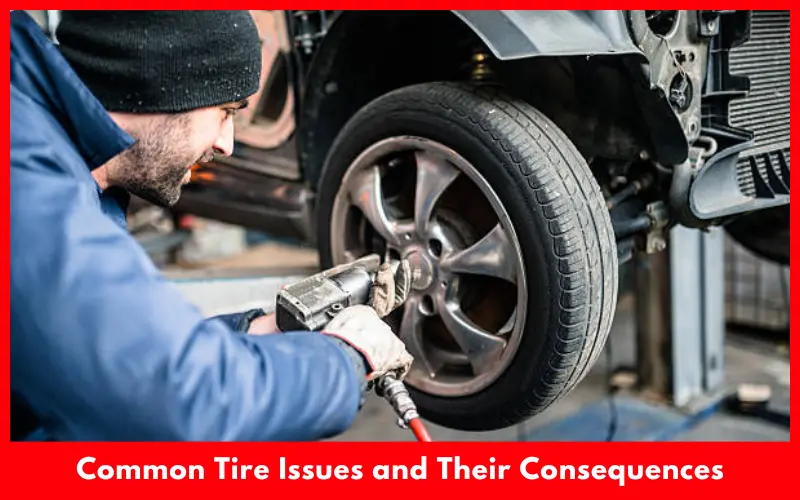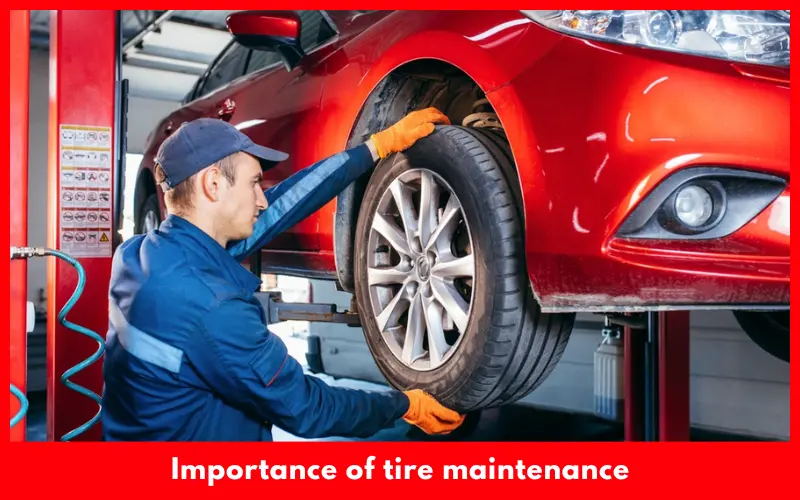Car safety comes to mind when we think about brakes and airbags but never gets to the tires and wheels. Yes, tire maintenance is not as obvious and underrated in the eyes of many of us! If you’re not one of us, the question what is the importance of tire maintenance for accident prevention.
I always change my tires when they’re worn out. Won’t that do? Tire maintenance is way more important than you might think.
Remember that the importance of correct pressures, at least partial wear difference, and regular visual checks cannot be overemphasised because these conditions determine how effectively you handle your vehicle, arguably the most critical aspect of accident avoidance.
Road safety is of paramount importance in this age. Thankfully, according to the US National Highway Transportation Safety Administration, fatality rates reduced by 0.9% between 2013 and 2014.
Article Summary
Importance of Tire Maintenance
It is still a problem that heightens the need for more vigilance and preventive measures. One such avenue is tire maintenance. After all, what is the point of having a nice car if the tires are not functioning optimally?
This blog is geared towards explaining why tire maintenance is vital in preventing accidents and includes some advice and tips for your benefit.
Understanding the Role of Tires in Vehicle Safety
Tires maintain firm contact with the road, support a vehicle’s weight, absorb road shocks and transmit braking and steering actions. Poor tire maintenance can compromise these vital functions, putting drivers and passengers at risk of serious accidents.
Traction and Grip
Good tyres are well maintained and grip the road effectively, allowing the driver to stop on slippery, icy or uneven surfaces. Driving on worn tyres creates less friction, increasing the likelihood that the vehicle will skid or slide out of control.
Braking Efficiency
Good tires make sure your vehicle stops correctly when you apply the brakes. If the tyres are worn or under-inflated, stopping distances can increase substantially, making it harder for you to avoid a collision.
Handling and Stability
When your tyres are worn-out, it can affect how your car responds to directions from the steering wheel. This can cause your car to understeer (fail to turn) or oversteer (turn more than the steering input), leading to skids, loss of control and potentially even fatal accidents.
Common Tire Issues and Their Consequences
Nowadays driving car with the defective tire can cause a serious threat little bit to the user of the car the much to the people who are in the way. Some of the most common tire issues with dangerous impacts are stated below.

- Improve human-sounding text while retaining citations and quotes.
- Tire issues you might encounter can be hazardous, also flat tires make sound. Aside from downtime, tires can have the following issues:
- Improve human-sounding text while retaining citations and quotes.
One of the most frequent yet hazardous tire problems is the bulging. Bulging tires may cause various problems, affecting driving safety due to damaged control or making them more prone to punctures. Most commonly, rubber separates from the wheel.
Sometimes, when one tire blows up, it can put tension on the others. If you’re not mindful, the other three tires might burst. While it’s rare, blowing up a tire can trigger a vehicle to flip. In most cases, it’s not a significant threat, but bulging tires can cause difficulties.
Tread Wear
An important metric to check is the depth of the tread. In wet weather conditions, the treads of the tyres maintain an effective grip on the slippery surface. Used tyres that have worn out treads tend to hydroplane on the road giving the driver very little time to react, increasing the risk of a severe car crash drastically.
Tire Pressure
Driving on an under-inflated tire is a lot like driving on an over-inflated one. The under-inflated tire gets hotter than the over-inflated tire because the friction with the road causes it to flex more.
This heat makes an under-inflated tire wear out faster, and have a much greater chance of getting a blowout. But an over-inflated tire squeezes less of its shape onto the road due to it becoming stiffer. This means it has less traction and will, therefore, lose the ability to handle itself like a normal tire does.
Bad Alignment
Bad alignment of wheels will trigger traction control light, which means premature replacement of tyres, and reduced handling. Poorly aligned wheels can cause the vehicle to pull to one side or the other, which is especially dangerous when you’re driving at high speed around a sharp bend, or trying to dodge an accident.
Tire cracks or bulges are visible indicators of structural damage. Tires with cracks or bulges are more prone to failure, and can result in a blowout or a loss of control.
And these are some of the most common tire problems, which should be treated as soon as possible. You can save yourself from car accidents and injuries actively and properly maintain your vehicle’s tire.
Steps To Proper Tire Maintenance
Inspect Visually
Inspect your tyres regularly, looking for any signs of uneven wear on the tread, surface cracks, foreign objects that might have become embedded in the tread and so on. Detect early, avoid the big headaches later.
Check Tire Pressure
It is important to check your tire pressure every month, and before long trips. Use a quality tyre pressure gauge at each wheel. Be sure the pressure is at the specified limit as shown on the tire placard on the driver’s door or in the owner’s manual. Remember that tire pressure increases in temperature. Most importantly, be safe when checking your tyre pressure.
Rotate Tires
Rotating your tires every 6,000 to 8,000 miles provides even wear across all four tires to extend their life (and balanced handling) – follow your vehicle manufacturer’s recommendation on tire rotation patterns.
Keep Tire Alignment in Check
Check your vehicle’s alignment every few thousand miles, especially if you notice that your tyres are deteriorating unevenly or if your vehicle has a tendency to veer to one side. Proper alignment is crucial because it helps your tyres wear evenly and provides optimal driving performance.
Balance Tires
Having your tires balanced while installed helps restore smooth driving qualities and assures even tire wear. Unbalanced tires can cause a tire and suspension to vibrate or shake at a frequency that is noticeable to the driver. You should balance your tires whenever you install new ones or whenever you notice any vibration.
Change Tyres Regularly
No matter how well you take care of your shocks and str you’ll need new tyres. Most tyres have tread-wear indicators, but a good rule of thumb is about every 6 years, regardless of mileage. When tyres get over 6 years old they begin to hire and become brittle and run-out.
The Benefits of Proper Tire Maintenance
Increased Safety: The best advantage of routine maintenance is that of increased safety. Well maintained tires are less likely to have blowouts, skid and loose control where this can lead to accidents.
Better Fuel Efficiency: Properly inflated tyres reduce rolling resistance and in turn reduce fuel consumption on your car. So maintaining the right tyre pressure keeps your vehicles more fuel-efficient, and reduces expenses on fuel.
Increased Life Of Tires: Due to proper care and maintenance, your tires will last longer without presenting any uneven wear and tear issues. In other words, they will require replacements much less frequently and will save you some money.

